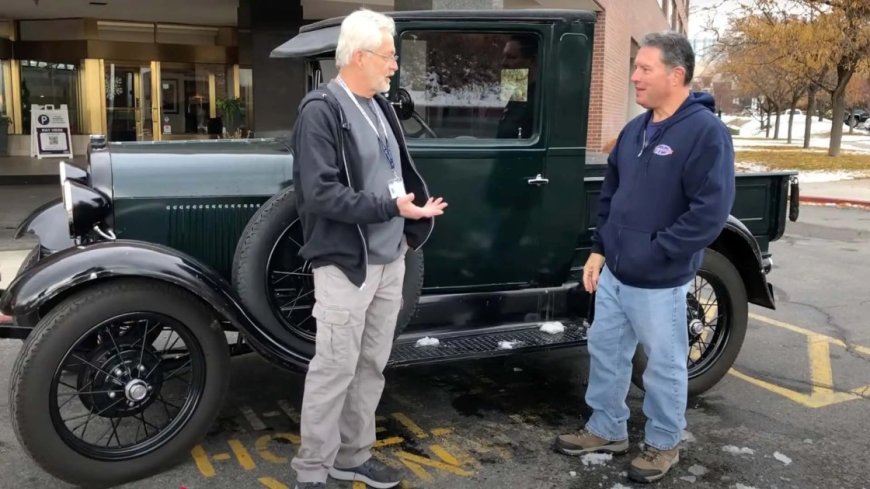Why This EV-Swapped 1928 Ford Model A Pickup is Cool
EV-swapping a vintage vehicle is likely to ruffle the feathers of diehard purists, but putting an electric powertrain in an old classic car can be a great way of keeping it on the road. Plus, some EV-swaps are easily reversible, like the one on this 1928 Ford Model A Pickup. Hear us out: It’s true… The post Why This EV-Swapped 1928 Ford Model A Pickup is Cool appeared first on The Online Automotive Marketplace.

EV-swapping a vintage vehicle is likely to ruffle the feathers of diehard purists, but putting an electric powertrain in an old classic car can be a great way of keeping it on the road. Plus, some EV-swaps are easily reversible, like the one on this 1928 Ford Model A Pickup.
Hear us out: It’s true that Ford never produced electric vehicles in the 1920s, but Ford’s first electric car was introduced back in 1914, and it was a battery-powered variant of the Model T. The primary reason electric cars died out by the 1920s was access to oil. Using oil as fuel was much cheaper than using batteries and electricity, so automotive manufactures switched gears from dabbling in electric power to focusing on refining the technology to produce more efficient and powerful internal combustion engines. That said, this 1928 Ford Model A pickup isn’t too far off from what could have been available in that era if oil hadn’t taken over the scene, but it’s even better: The modern EV-swap offers considerably better performance and range compared to the original vintage EVs.
This EV conversion project, built by retiree Dennis Thompson, utilizes a Hyper 9 kit by Flash Drive Motors. The kit includes a 120-horsepower (90-kilowatt) electric motor, and presumably everything needed to turn any vintage or classic car into an EV. The battery pack is made up of five 6.3-kilowatt-hour battery modules sourced from a Tesla Model S, which gives it a total capacity of around 33 kWh.
The EV conversion arguably improves certain aspects of the vintage vehicle, but if the owner (or future owner) decides otherwise, the EV-swap is designed to be easily reversed. The option to reinstall the original combustion engine should put most worries about the possibility of lowering the vehicle’s value with a custom EV-swap to rest.
The EV swap gives the vintage Ford Model T nearly twice the power of even the most powerful engine that was offered from the factory, which offered just 40 horsepower and a top speed of 65 miles-per-hour. It can more safely keep up with highway speeds and even raise some eyebrows at the traffic lights as the tires chirp under the extra power when the light turns green.
As far as the vintage car driving experience, much of it is still retained. The only thing missing are the sounds and noxious fumes that the internal combustion engine would produce. The electric motor sends power to the rear wheels via the Ford’s original three-speed transmission, which is known for its gear whine from the straight-cut gears. And unless the vintage car is completely rebuilt to eliminate the familiar old car body rattling sounds, it’ll still make noise going down the road.
It took just over a year for Dennis to complete the EV swap, which costed him around $17,300 for the Hyper 9 kit. Watch the video and let us know what you think in the comments below:
The post Why This EV-Swapped 1928 Ford Model A Pickup is Cool appeared first on The Online Automotive Marketplace.











































